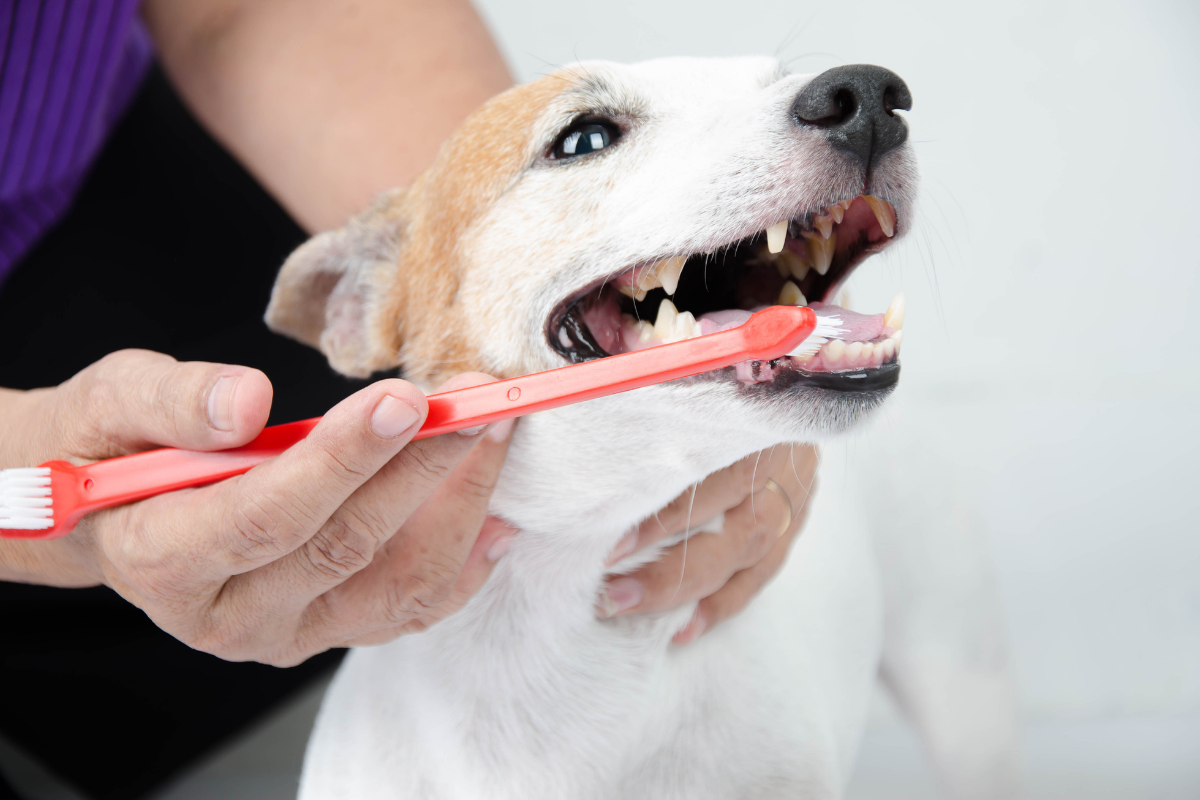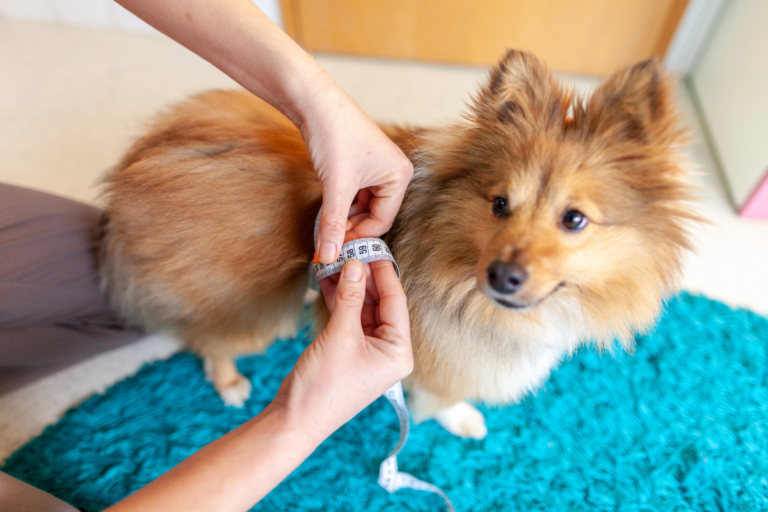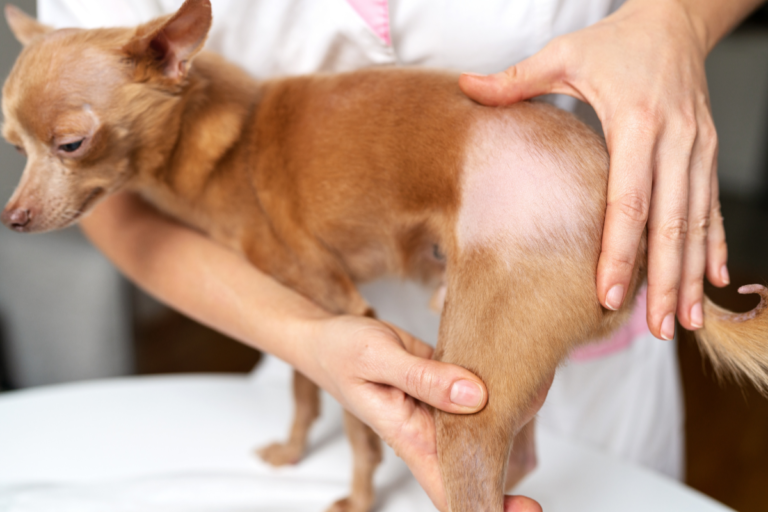Our Furry Friends Oral Health Crisis: Tackling Periodontal Disease in Dogs
Understanding Periodontal Disease in Dogs
Periodontal disease—it’s like your dog’s toothy nightmare. It’s sneaky and widely affects our four-legged pals, but knowing about it helps in beating this doggy dilemma.
Dental Health Matters
We gotta talk teeth, because those chompers are more important than we think. Nearly nine out of ten dogs are dealing with gum trouble by the time they’re two. Keeping their mouths healthy isn’t just for chewing their favorite snacks; it’s pivotal for playtime and just feeling good overall. Gum disease can stir up chronic pain or serious infections if we ignore it.
How do we dodge these risks? Regular vet visits, brushing those pearly whites, and using the right dental goodies. Make dental care a top priority, and you’re setting up your furry buddy for a happy, pain-free life. Check out more tips in our dental disease in dogs guide.
What Periodontal Disease Does
When periodontal disease strikes, it goes for the tooth’s deeper spots, causing all sorts of drama like nagging pain, gum erosion, and even tooth loss (Reed Animal Hospital). If it sits unattended, expect infections and bone damage.
This disease doesn’t discriminate; around 80–90% of puppers over three have caught this bug (Cornell University College of Veterinary Medicine). Though our little dog breeds seem to be more plagued, age is a factor too. What’s the culprit? Plaque and tartar making themselves at home on those fangs (Small Door Vet).
We can dodge this dental downfall with some foresight. Scheduling those vet check-ups and keeping up with at-home care can hold periodontal problems at bay. For more tricks, swing over to our piece on dog gum disease.
Once we get that canine dental health isn’t just about looks, but life quality, we’ll help our best friends stay tail-waggingly healthy and happy.
Causes and Risk Factors
We’re diving into what makes our dogs’ gums grumpy and how to keep their smiles healthy. Knowing this stuff makes us responsible dog parents, right? So, here’s what’s causing those pesky gum issues.
Plaque and Tartar Buildup
Let’s face it, dog breath ain’t always the best. Blame it on the bacteria party happening in their mouths! This party creates plaque—a sticky film that, if left unattended, hardens into tartar. Tartar is like the uninvited guest that ruins everything. It brings inflammation and infection, wrecking the party and, ultimately, our dogs’ gums.
Ever notice how tough it is to brush your dog’s teeth? You’re not alone. Plaque mixes with their saliva and minerals, making tartar that kicks off gum inflammation and leads to gum disease.
Here’s the step-by-step breakdown (it’s not pretty):
| Stage | What Happens |
|---|---|
| Plaque Formation | Bacteria and leftover food turn into a sticky mess |
| Tartar Hardening | Plaque crystallizes with saliva, forming tough tartar |
| Gum Inflammation | Tartar continually irritates, causing gums to swell |
Diet, nutrition mishaps, grungy toys, and how well we clean their teeth—all these contribute to periodontal issues. It’s also about how their pearly whites align, too.
Breed Predispositions
Ever notice your little Pug or that sassy Chihuahua with oral issues? Some breeds just drew the short straw in the dental department due to genetics or those adorably awkward snouts. Small, toy, and flat-faced breeds like Pugs, Yorkies, Chihuahuas, and Boxers are more susceptible.
Here’s why they catch the short end of the tail:
- Hand-me-down Genes: Some breeds inherit dental dilemmas.
- Muzzle Shape: Those squishy faces make brushing a challenge.
- Wonky Chompers: Crooked teeth trap food, letting bacteria throw another bash.
For breed-specific dental hurdles, check our write-ups on dachshund troubles, frenchie issues, or cavaliers’ health.
Being clued-up on these risk factors means we can nip dog gum problems in the bud and keep their chompers happy. Let’s make sure our fluffy pals stay in top dental shape because a happy dog starts with a healthy smile!
Signs and Symptoms
Keeping an eye on our dogs’ mouths can hint at bigger health issues. Pay attention to these warning signs so we can get them feeling tip-top in no time!
Early Signs to Watch For
Spotting periodontal disease early can save our pooches from further trouble later. Some red flags to keep on your radar are:
- Bad Breath: If your pup’s breath could peel paint, it’s time to check those pearly whites.
- Oral Pain: If Fido’s batting at his face or licking his chops nonstop, he might be feeling the burn (Cornell University College of Veterinary Medicine).
- Drooling: It’s cute until it’s not. Drool puddles could mean dental distress.
- Decreased Appetite: Slow munching or skipping meals altogether? Sore gums might be to blame.
- Red or Inflamed Gums: Angry-looking gums are a big hint that trouble’s brewing (Hamilton Animal Hospital).
- Disinterest in Chew Toys: When Max snubs his beloved rubber chicken, he may be dodging mouth pain.
Advanced Symptoms to Note
If periodontal disease isn’t caught early, more serious symptoms pop up. Keep a lookout for signs like:
- Loose or Missing Teeth: If you’re playing tooth fairy, a visit to the vet needs to happen pronto.
- Bleeding Gums: Bleeding when chewing? Not good. Call your vet to talk treatment (Cornell University College of Veterinary Medicine).
- Behavior Changes: Snappy dog? Painful gums can make the sweetest pooch feel grumpy.
- Difficulty Chewing Food: Struggling to get through kibble? He might prefer mushier meals for now (Hamilton Animal Hospital).
- Excessive Drooling: More drool means more problems—don’t ignore it (Small Door Vet).
- Mouth Odor: If the stink takes a turn for the worse, don’t wave it off (Small Door Vet).
- Pawing at the Mouth: Smacking or pawing signals that something’s not right inside.
| Symptom | Early Stage | Advanced Stage |
|---|---|---|
| Bad Breath | Yep | Yep |
| Oral Pain | Yep | Yep |
| Drooling | Yep | Yep |
| Decreased Appetite | Yep | |
| Red or Inflamed Gums | Yep | Yep |
| Disinterest in Toys | Yep | |
| Loose Teeth | Yep | |
| Bleeding Gums | Yep | |
| Behavior Changes | Yep | |
| Difficulty Chewing | Yep | |
| Mouth Odor | Yep | |
| Pawing at Mouth | Yep | Yep |
Catching these clues early means a happier, healthier dog—and less time in the vet’s office. For a deeper dive into dog diseases and symptoms, check out dog diseases.
Diagnosis and Treatment
Veterinary Evaluation
So, our doggy buddies need a dental check-up, just like us! Diagnosing periodontal issues in our dogs isn’t a walk in the park. Our vet pals might poke around with their dental tools, take a peek at full mouth X-rays, and do a little root snooping (PetMD). Catching gum problems early means happier tails and fewer trips to the vet.
Stages of Periodontal Disease
Here’s how gum disease sneaks up on our furry pals:
| Stage | Sneaky Symptoms | Why They Need Help |
|---|---|---|
| Stage 1 | Gums that are a bit grumpy—no bones gone yet! | Just a good dental cleaning |
| Stage 2 | Grumpy gums get bony | Deep cleaning to the rescue |
| Stage 3 | Seriously sore gums, bones waving goodbye | More cleaning, maybe some poking around |
| Stage 4 | Bone’s practically ghosting, infections say hi | Removing teeth and serious vet stuff |
The better we get these stages, the quicker and smarter we can zap the gum goblins.
Treatment Options
When it comes to battling dental drama in dogs, it’s all about the right move, right time. Early stages? Piece of cake. Later on? A bit trickier, but we’ve got this.
- Professional Dental Cleaning: For just-the-beginnings of gingivitis, professional touch-ups with a fluoride bonus can flip the script.
- Deep Scaling: If the sneaky gum invaders strike harder (Stages 2-3), vets go deep, scraping under the gum fortress, then polish, polish, polish to keep those nasties at bay.
- Surgical Procedures: When things get toothy, some may need to hit the road, but sometimes root canals come to the rescue, giving teeth a second chance.
These cleanings—with a snoozing pup—are never cheap. They can run the wallet anything from $500 up to $5,000, depending on how fancy the fix needs to be and the skills of the vet.
Estimated Costs of Dental Procedures
| Procedure | Average Cost (USD) |
|---|---|
| Dental Touch-Up | $500 – $1,000 |
| Tooth Eviction | $800 – $1,200 for each tooth saying goodbye |
| Scale & Polish | $600 – $1,500 |
| Root Rescue (Root Canal) | $1,500 – $5,000 |
Staying sharp on doggy dental care can save our wallets and keep our tails wagging. Consistent dental love stops big drama and spare us from bank-breaking vet bills.
Want more tips on keeping doggy teeth sparkling and trouble-free? Check out our spot-on advice at prevent sneaky dental danger. This ensures Fido keeps flashing those happy, healthy smiles, wagging all the while!
Prevention and Management
Keep Those Chompers Clean
Let’s talk teeth—doggy style. Keeping our pups’ mouths in tip-top shape isn’t just for those million-dollar doggy smiles; it’s key to dodging those nasty gum issues.
-
Daily Brushing: Just like us humans, doggos need their toothbrush time too. Grab a dog-friendly toothbrush and toothpaste (human stuff’s a no-go zone for dogs). For some hot brushing tips, check out our page on How to Brush Your Dog’s Teeth.
-
Professional Cleanings: It’s time for that annual spa day. Deep diving under the gums needs the pros, and yep, that usually means taking a little nap (for your dog, not you!). Check the deets at Cornell University College of Veterinary Medicine and aim for those yearly snooze-and-scrub sessions.
-
Non-Anesthetic Cleaning: If your pup isn’t a fan of the sleepytime cleaner, look into non-anesthetic options. Spots like Reed Animal Hospital can keep things clean without the meds.
Smart Moves to Dodge Doggy Dental Drama
Nipping gum disease in the bud? It’s as easy as sticking to a game plan that’s consistent and dog-friendly.
Training and Top-Notch Tools
Ease your fur buddy into the dental care game with short and sweet sessions. They’ll eventually roll with the routine. And remember, quality tools make all the difference.
Annual Peek in the Mouth
Don’t skip the yearly vet date. These checks aren’t just about teeth—vets can spot signs of trouble early and set things right.
Home Sweet Dental Care
Keep the choppers sharp with these home-care hints:
- Dental Chews: They’re tasty, and they work. Look for those carrying the VOHC seal—they’re the real deal.
- Water Additives: Add a splash of these in their bowl to fight off those pesky mouth invaders.
- Dental-Boosting Foods: Some chow is specially designed to keep teeth happy. It’s dog food, but it’s a secret dental weapon.
Watching Out for Warning Signs
Keep those peepers peeled for dental strife signs such as dragon breath, red gums, or if your pup is playing hard to get with their food. Nip issues in the bud before they take a huge bite out of your pup’s happiness and health (Guilford Jamestown Veterinary Hospital).
If you want the full scoop on keeping their gnashers gleaming, our thorough piece on Dog Dental Disease has got your back.
Caring for our furry pals’ teeth isn’t just about avoiding bad breath; it’s a step towards a happier, healthier best bud. With these tips, we’re setting the stage for wagging tails and toothy grins galore!
Cost Considerations and Long-Term Effects
Financial Aspects of Treatment
Tackling the menace of periodontal disease in dogs can be pricey, especially as it creeps into later stages. Things like how bad it is, where you live, and which vet handles it can all affect your wallet differently.
| Stage of Disease | Typical Cost (USD) |
|---|---|
| Stage 1 (Gingivitis) | $200 – $300 |
| Stage 2 (Early Periodontitis) | $300 – $800 |
| Stage 3 (Moderate Periodontitis) | $800 – $2,500 |
| Stage 4 (Advanced Periodontitis) | $1,500 – $5,000 |
Numbers brought to you by PetMD and Guilford Jamestown Veterinary Hospital.
Treatments range from scaling, polishing, tooth pulling, and even root canals. Before diving in, a dog’s usually got to have blood work to make sure they’re fit for the knockout juice. Speaking of which, putting them under can set you back $65 to $100 just in anesthesia.
Long-Term Health Implications
Ignoring your pup’s dental drama can lead to more than bad breath. It’s not just a toothache; we’re talking real health woes.
- Heart Health: Those sneaky germs from the mouth can get into the blood and mess with the ticker, causing problems like endocarditis.
- Kidney and Liver Problems: Chronic mouth nasties can bug the kidneys and liver, messing with their job.
- Bone and Tooth Loss: At its worst, periodontal disease gnaws away at bone, leading to wobbly or missing chompers, which means your dog might struggle with meals.
| Health Implication | Potential Issue |
|---|---|
| Heart | Endocarditis |
| Kidney | Reduced Function |
| Liver | Hepatitis |
| Bone and Teeth | Tooth Loss |
Knowing the potential financial hit and the health baggage that comes with periodontal disease helps us make smart choices for keeping our furry pals in tip-top shape. Regular dentist-like check-ups and smart preventive tactics are the name of the game, keeping issues at bay and bills lower. For more on dodging these dental disasters, hop over to our prevention strategies for dental disease in dogs.






